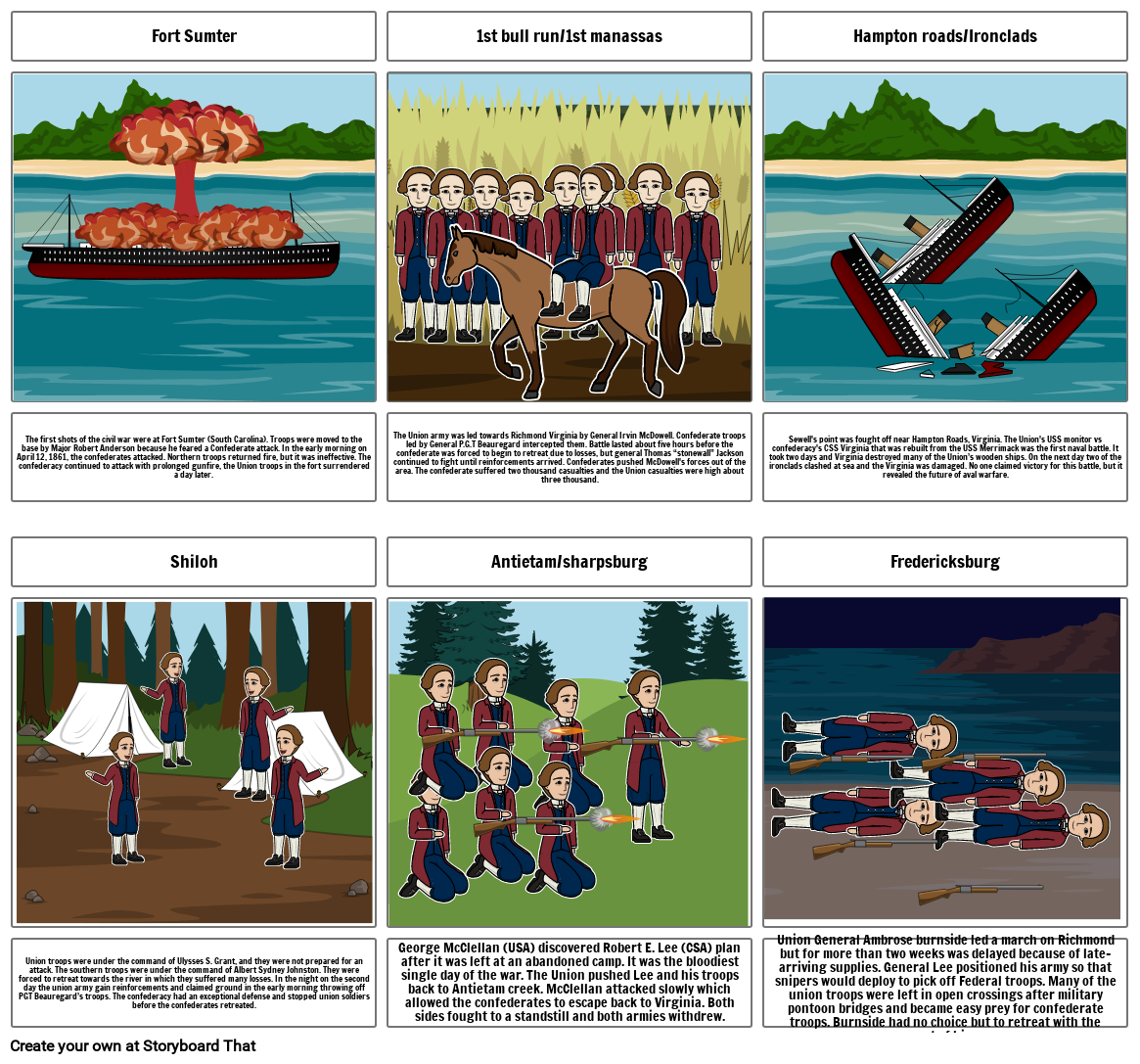Unknown Story

Storyboard Tekst
- Fort Sumter
- 1st bull run/1st manassas
- Hampton roads/Ironclads
- The first shots of the civil war were at Fort Sumter (South Carolina). Troops were moved to the base by Major Robert Anderson because he feared a Confederate attack. In the early morning on April 12, 1861, the confederates attacked. Northern troops returned fire, but it was ineffective. The confederacy continued to attack with prolonged gunfire, the Union troops in the fort surrendered a day later.
- Shiloh
- The Union army was led towards Richmond Virginia by General Irvin McDowell. Confederate troops led by General P.G.T Beauregard intercepted them. Battle lasted about five hours before the confederate was forced to begin to retreat due to losses, but general Thomas “stonewall” Jackson continued to fight until reinforcements arrived. Confederates pushed McDowell's forces out of the area. The confederate suffered two thousand casualties and the Union casualties were high about three thousand.
- Antietam/sharpsburg
- Sewell's point was fought off near Hampton Roads, Virginia. The Union's USS monitor vs confederacy's CSS Virginia that was rebuilt from the USS Merrimack was the first naval battle. It took two days and Virginia destroyed many of the Union’s wooden ships. On the next day two of the ironclads clashed at sea and the Virginia was damaged. No one claimed victory for this battle, but it revealed the future of aval warfare.
- Fredericksburg
- Union troops were under the command of Ulysses S. Grant, and they were not prepared for an attack. The southern troops were under the command of Albert Sydney Johnston. They were forced to retreat towards the river in which they suffered many losses. In the night on the second day the union army gain reinforcements and claimed ground in the early morning throwing off PGT Beauregard’s troops. The confederacy had an exceptional defense and stopped union soldiers before the confederates retreated.
- George McClellan (USA) discovered Robert E. Lee (CSA) plan after it was left at an abandoned camp. It was the bloodiest single day of the war. The Union pushed Lee and his troops back to Antietam creek. McClellan attacked slowly which allowed the confederates to escape back to Virginia. Both sides fought to a standstill and both armies withdrew.
- Union General Ambrose burnside led a march on Richmond but for more than two weeks was delayed because of late-arriving supplies. General Lee positioned his army so that snipers would deploy to pick off Federal troops. Many of the union troops were left in open crossings after military pontoon bridges and became easy prey for confederate troops. Burnside had no choice but to retreat with the remnant of his army.
Meer dan 30 miljoen storyboards gemaakt

